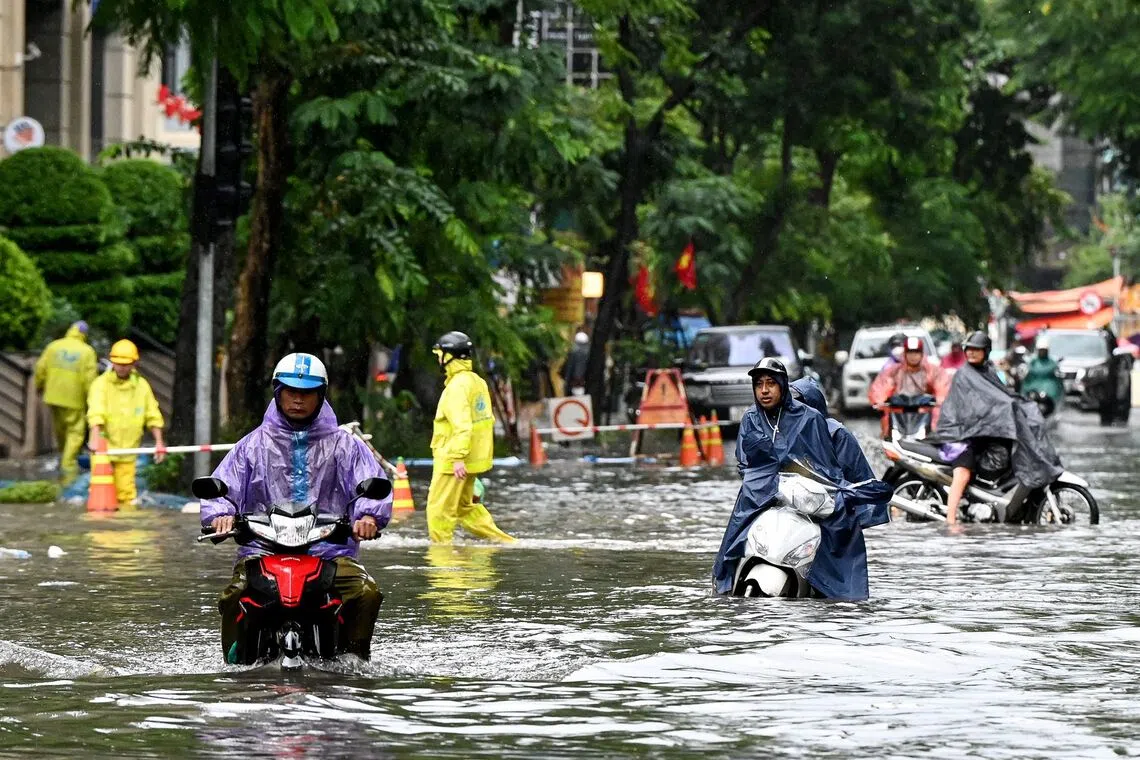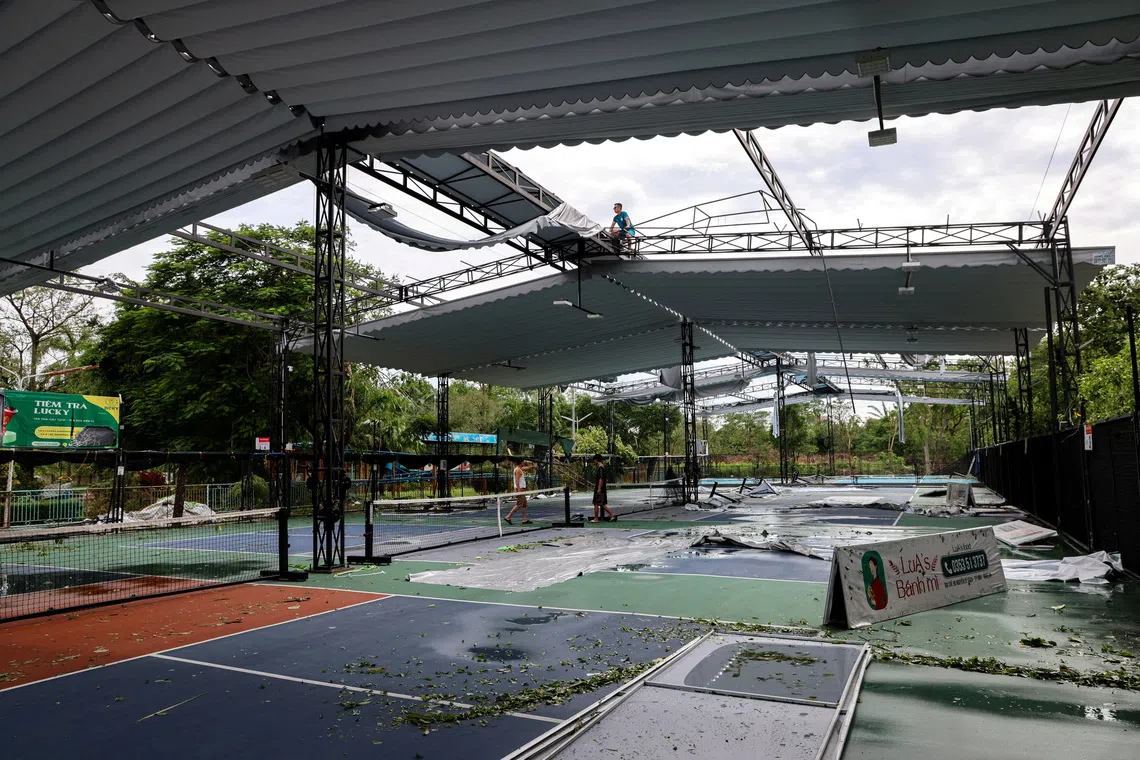SAF coordinates delivery of over 5 tonnes of humanitarian aid to typhoon-hit Vietnam
Sign up now: Get ST's newsletters delivered to your inbox
Follow topic:
SINGAPORE – The Singapore Armed Forces (SAF) has coordinated a delivery of over five tonnes of humanitarian aid to Vietnam in response to the successive typhoons that struck the country in recent months.
Typhoon Kajiki brought torrential rain to Vietnam’s north central coast in August while Typhoon Bualoi made landfall on Sept 29
This was followed by Typhoon Matmo, which flooded parts of Hanoi
In a statement on Oct 25, the Ministry of Defence (Mindef) said more than five tonnes of aid contributed by the SAF and non-governmental organisation Caritas Humanitarian Aid and Relief Initiatives Singapore will be transported via commercial air freight to Vietnam.
The relief supplies included thermal blankets and hygiene kits to support sustenance needs, in accordance with Vietnam’s request.
The delivery was coordinated by the Changi Regional Humanitarian Assistance and Disaster Relief Coordination Centre (Changi RHCC).

Vehicles drive on a flooded street due to heavy rains caused by Typhoon Matmo in Hanoi on Oct 7.
PHOTO: AFP
Director of Changi RHCC, Colonel Lew Tze Soon, said that the centre and SAF stand “ready and committed” to supporting regional humanitarian assistance and disaster relief operations, and will work alongside civilian partners like local and regional non-governmental organisations.
Mindef added that the humanitarian assistance underscores the bilateral defence relations between both countries. It builds on the close cooperation following the signing of the renewed bilateral Defence Cooperation Agreement between the two countries in 2022.

Typhoon Bualoi has triggered heavy rain across most of Vietnam since Sept 27.
PHOTO: REUTERS
Vietnam’s government said Typhoon Bualoi caused an estimated eight trillion dong (S$392 million) in property damage so far, saying in a preliminary assessment on Oct 1 that nearly 170,000 houses were damaged or inundated by flooding.
The typhoon severely damaged roads, schools and offices, and caused power grid failures that left tens of thousands of families without electricity, the report said. More than 34,000ha of rice and other crops were destroyed, it said.


